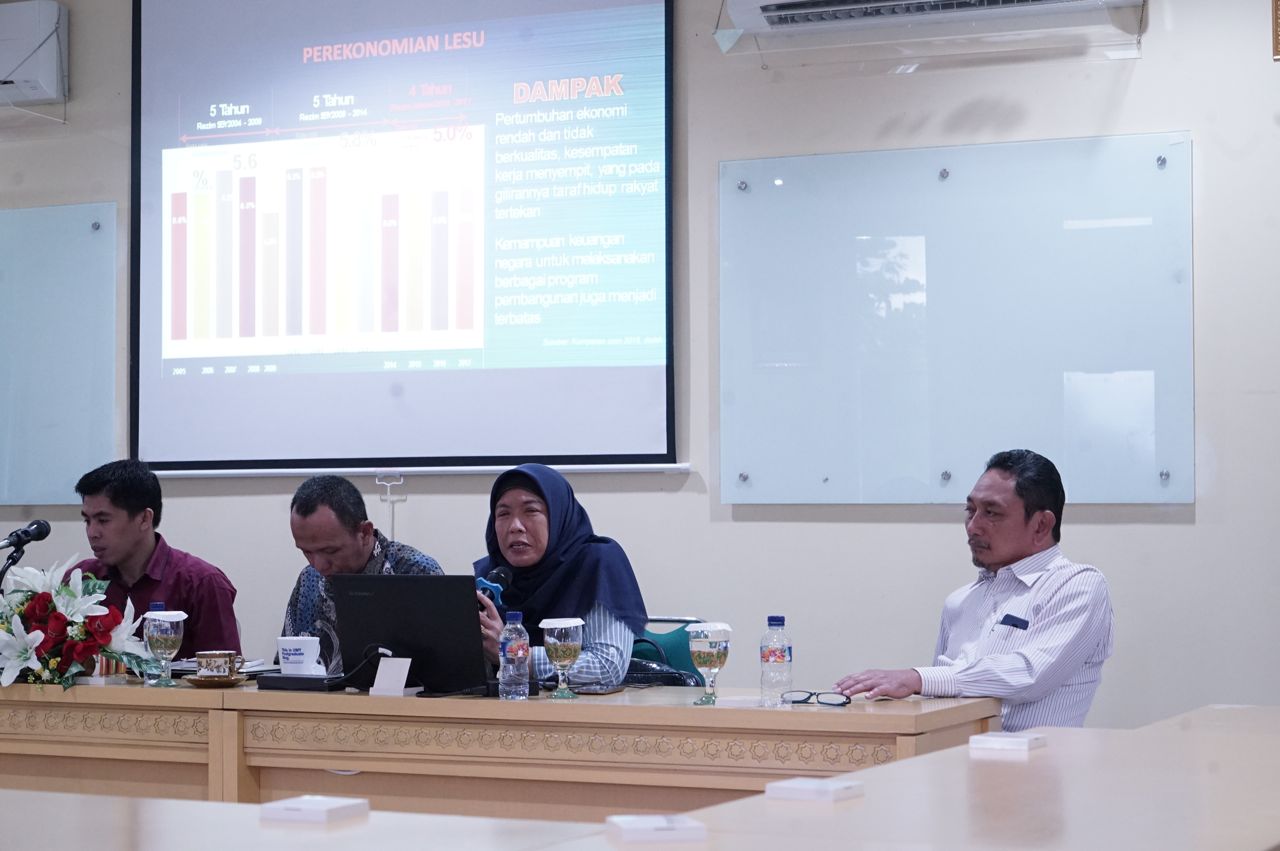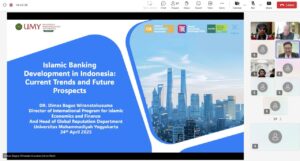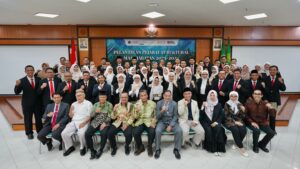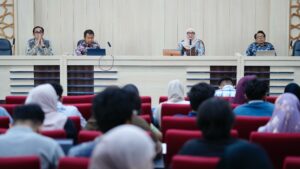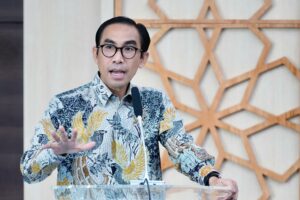In macroeconomics, economic performance of a country can be assessed through several indicators. A variable of the indicator brings huge impacts on other indicators. Besides, economic growth is closely related to prosperity and poverty of a nation. A lecturer of Faculty of Economics and Business of Universitas Muhammadiyah Yogyakarta (UMY) Dr. Lilies Setiartiti, S.E. stated that economy of Indonesian is getting disquieting and the number of poor people reached 100 million.
At Refleksi Akhir Tahun (Year End Reflection) 2018 and Outlook 2019 of Graduate School of UMY on Saturday (29/12) at Meeting Hall of the Graduate School, Lilies conveyed, “Even though we need good infrastructures, welfare or economic performance of a nation cannot be measured by the length of the roads, the number of bridges, and turnpikes. However, the prosperity can be gauged by the number of poor people and purchasing power.”
In 2015, Indonesia targeted 5.7 percent of economic growth, yet it only reached 4.9 percent. It demonstrated that Indonesian economy was not great. Lilies criticized several factors affecting the economic decreasing as the fuel price rose, imports were greater than exports, and the rupiah exchange rate weakened.
Low-middle economic class people such as salt, rice and cassava farmers perceived the impacts. According to data of World Happiness Report 2018 by the United Nations surveying subjective welfare, Indonesia ranked 96th reducing from number 72. Meanwhile, Finland ranked as the happiest country substituting Norway.
“Many salt farmers in Madura were miserable since government imports 1.7 tons of salt from Australia each year since they consider that local salt has low quality. An answer of the low quality is not by importing salt but educating the farmers to cultivate high quality salt. The solution is not imports, imports, and imports which render the Indonesia’s happiness index down,” emphasized Lilies.
